Addictions
‘Our Liberal Government Is Acting Like A Drug Lord’: A Mother’s Testimony
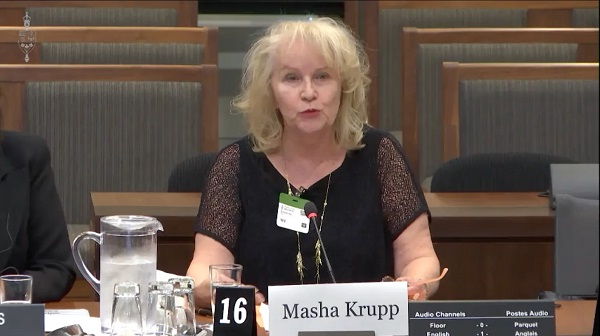
By Adam Zivo
“As soon as [my son] was put on safe supply, he started diverting his safe supply” Mom tells Parliament safer supply isn’t working
“The whole purpose of the safer supply program was to divert addicts from using harmful street drugs, but that’s not happening,” testified Masha Krupp, an Ottawa-based mother, at the House of Commons Health Committee last week. Exhausted and blunt, she described how her son has, in the past, diverted his “safer supply” drugs to the black market and how she has personally witnessed widespread diversion, by other patients, outside the clinic her son attends.
Safer supply programs distribute free addictive drugs – typically hydromorphone, a heroin-strength opioid – under the belief that this stabilizes addicts and dissuades them from consuming riskier street substances. Addiction experts and police leaders across Canada, however, say that recipients regularly divert these taxpayer-funded drugs to the black market, fueling new addictions and gang profits.
The Liberals and NDP have denied that widespread safer supply diversion is occurring, despite ample evidence to the contrary – but Krupp’s lived experiences underline the folly of their willful blindness.
“As soon as he was put on safe supply, he started diverting his safe supply,” she testified. “You’ve got drug dealers – I know this for a fact through my son; I’ve seen it – they will come to your home, 24/7, you can call two in the morning. They take your hydromorphone pills.”
According to Krupp, her son’s addiction issues have not improved despite him being enrolled in a safer supply program for more than two years. He still uses fentanyl and crack cocaine, which led to yet another overdose just last month, she said, adding that diversion and a lack of recovery-oriented services contribute to his instability.
“The Dilaudid (brand name hydromorphone) is a means of currency for my son to continue using crack cocaine – so it’s not safe, because he’s still using unsafe street drugs,” she said in parliament.
Krupp further explained that, on multiple occasions, she witnessed and photographed patients selling their safer supply in front of the clinic where her son has been a patient since June 2021. The transactions were not subtle: she could see them counting and exchanging white pills.
Over time, Krupp corroborated these observations by acquainting herself with some of these patients, who would admit to selling their safer supply: “I get to know all these people that are diverting and using right in front of the clinic, in front of all the tourists, parents walking by with kids.”
She believes that safer supply could have a role in addiction care if it were better regulated, but feels that the current model, where supervised consumption of these drugs is rarely required, is only “flooding the market, using taxpayers’ dollars, with lethal opiates…”
“It’s unsafe supply, in my view, as a mother with lived experience,” said Krupp. “Our Liberal government, right now, is acting like a drug lord.”
Her testimony was consistent with what was described in a CBC investigative report published last February, wherein Ottawa’s police officers confirmed that safer supply diversion is rampant.
One constable quoted in the story, Paul Stam, said that virtually anytime police would pull up to Rideau and Nelson street, where the clinic Krupp’s son attends is located, “they would observe people openly trafficking in diverted hydromorphone.” The officer further told the CBC that the “street is flooded with this pharmaceutical grade hydromorphone” and that there has been a dramatic, province-wide reduction in the drug’s blackmarket price – from $8-9 per 8-mg pill to just $1-2 today.
Although Krupp gave her parliamentary testimony last week, I interviewed her in July and kept her story private at her request – at the time, she worried that going public could interfere with her son’s attempts at recovery.
In the July interview, Krupp explained that, not only had her son told her that safer supply diversion is ubiquitous, she had also heard this from two acquaintances of his, who were also on the program: “The information that I’ve received is that the drug dealers have operations set up 24/7 across the city, buying legal dillies (the slang term for hydromorphone).”
She explained that she had been able to witness and document safer supply diversion because, on most Friday mornings, she would take her son to his clinic appointments and wait for him outside in her car. As she was often parked just two or three metres away from where many drug deals occurred, she had a line of sight into what was going on: clearly-identifiable dillies being handed over for other drugs.
She estimated that, by that point, she had cumulatively witnessed at least 25 safer supply patients engage in diversion.
“[Safer supply patients] would trade their dillies for fentanyl and/or crack cocaine and smoke or inject it right in front of me. They would just huddle in a corner. It’s all done very openly,” she said. “What I witness, to me, is a human tragedy on the sidewalks of the nation’s capital, with Parliament Hill eight or nine blocks away, and all the politicians sitting there singing praises to safer supply.”
She pushed back on the narrative, popular among Liberal and NDP politicians, that criticism of safer supply is conservative fear mongering and said that she had voted NDP in the past, and had even voted for Trudeau in 2015. Her disgust with safer supply was simply her “speaking from the heart as a mother.”
While harm reduction activists claim that safer supply is a form of compassionate care, Krupp vehemently disagreed: “How is it compassionate to fuel somebody’s addiction? How is it humane to keep a perpetual cycle of drug abuse and dependence?”
Subscribe to Break The Needle. Our content is always free – but if you want to help us commission more high-quality journalism, consider getting a voluntary paid subscription.
Addictions
Activists Claim Dealers Can Fix Canada’s Drug Problem

By Adam Zivo
We should learn from misguided experiments with activist-driven drug ideologies.
Some Canadian public-health researchers have argued that the nation’s drug dealers, far from being a public scourge, are central to the cause of “harm reduction,” and that drug criminalization makes it harder for them to provide this much-needed “mutual aid.” Incredibly, these ideas have gained traction among Canada’s policymakers, and some have even been put into practice.
Gillian Kolla, an influential harm-reduction activist and researcher, spearheaded the push to whitewash drug trafficking in Canada. Over the past decade, she has advocated for many of the country’s failed laissez-faire drug policies. In her 2020 doctoral dissertation, she described her hands-on research into Toronto’s “harm reduction satellite sites”—government-funded programs that paid drug users to provide services out of their homes.
The sites Kolla studied were operated by the nonprofit South Riverdale Community Health Centre (SRCHC) in Toronto. Addicts participating in the programs received $250 per month in exchange for distributing naloxone and clean paraphernalia (needles and crack pipes, for example), as well as for reversing overdoses and educating acquaintances on safer consumption practices. At the time of Kolla’s research (2016–2017), the SRCHC was operating nine satellite sites, which reportedly distributed about 1,500 needles and syringes per month.
Canada permits supervised consumption sites—facilities where people can use drugs under staff oversight—to operate so long as they receive an official exemption via the federal Controlled Drugs and Substances Act. As the sites Kolla observed did not receive exemptions, they were certainly illegal. Kolla herself acknowledged this in her dissertation, writing that she, with the approval of the University of Toronto, never recorded real names or locations in her field notes, in case law enforcement subpoenaed her research data.
Even so, the program seems to have enjoyed the blessing of Toronto’s public health officials and police. The satellite sites received local funding from 2010 onward, after a decade of operating on a volunteer basis, apparently with special protection from law enforcement. In her dissertation, Kolla described how SRCHC staff trained police officers to leave their sites alone, and how satellite-site workers received special ID badges and plaques to ward off arrest.
Kolla made it clear that many of these workers were not just addicts but dealers, too, and that tolerance of drug trafficking was a “key feature” of the satellite sites. She even described, in detail, how she observed one of the site workers packaging and selling heroin alongside crackpipes and needles.
In her dissertation, Kolla advocated expanding this permissive approach. She claimed that traffickers practice harm reduction by procuring high-quality drugs for their customers and avoiding selling doses that are too strong.
“Negative framings of drug selling as predatory and inherently lacking in care make it difficult to perceive the wide variety of acts of mutual aid and care that surround drug buying and selling as practices of care,” she wrote.
In truth, dealers routinely sell customers tainted or overly potent drugs. Anyone who works in the addiction field can testify that this is a major reason that overdose deaths are so common.
Ultimately, Kolla argued that “real harm reduction” should involve drug traffickers, and that criminalization creates “tremendous barriers” to this goal.
The same year she published her dissertation, Kolla cowrote a paper in the Harm Reduction Journal with her Ph.D. supervisor at the Dalla Lana School of Public Health. The article affirmed the view that drug traffickers are essential to the harm-reduction movement. Around this time, the SRCHC collaborated with the Toronto-based Parkdale Queen West Community Health Centre— the only other organization running such sites—to produce guidelines on how to replicate and scale up the experiment.
Thankfully, despite its local adoption, this idea did not catch on at the national level. It was among the few areas in the early 2020s where Canada did not fully descend into addiction-enabling madness. Yet, like-minded researchers still echo Kolla’s work.
In 2024, for example, a group of American harm-reduction advocates published a paper in Drug and Alcohol Dependence Reports that concluded, based on just six interviews with drug traffickers in Indianapolis, that dealers are “uniquely positioned” to provide harm-reduction services, partly because they are motivated by “the moral imperative to provide mutual aid.” Among other things, the authors argued that drug criminalization is harmful because it removes dealers from their social networks and prevents them from enacting “community-based practices of ethics and care.”
It’s instructive to review what ultimately happened with the originators of this movement—Kolla and the SRCHC. Having failed to whitewash drug trafficking, Kolla moved on to advocating for “safer supply”—an experimental strategy that provides addicts with free recreational drugs to dissuade use of riskier street substances. The Canadian government funded and expanded safer supply, thanks in large part to Kolla’s academic work. It abandoned the experiment after news broke that addicts resell their safer supply on the black market to buy illicit fentanyl, flooding communities with diverted opioids and fueling addiction.
The SRCHC was similarly discredited after a young mother, Karolina Huebner-Makurat, was shot and killed near the organization’s supervised consumption site in 2023. Subsequent media reports revealed that the organization had effectively ignored community complaints about public safety, and that staff had welcomed, and even supported, drug traffickers. One of the SRCHC’s harm-reduction workers was eventually convicted of helping Huebner-Makurat’s shooter evade capture by hiding him from the police in an Airbnb apartment and lying to the police.
There is no need for policymakers to repeat these mistakes, or to embrace its dysfunctional, activist-driven drug ideologies. Let this be another case study of why harm-reduction policies should be treated with extreme skepticism.
Our content is always free
If you want to help us commission more high-quality journalism,
consider getting a voluntary paid subscription.
Addictions
Canadian gov’t not stopping drug injection sites from being set up near schools, daycares
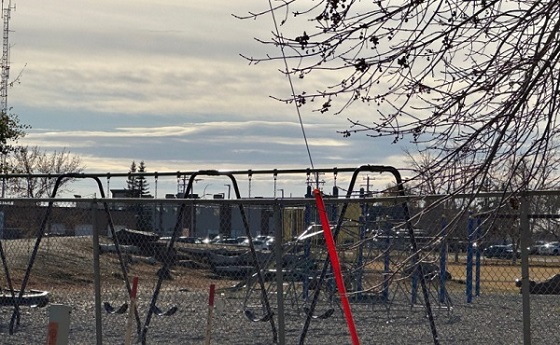
From LifeSiteNews
Canada’s health department told MPs there is not a minimum distance requirement between safe consumption sites and schools, daycares or playgrounds.
So-called “safe” drug injection sites do not require a minimum distance from schools, daycares, or even playgrounds, Health Canada has stated, and that has puzzled some MPs.
Canadian Health Minister Marjorie Michel recently told MPs that it was not up to the federal government to make rules around where drug use sites could be located.
“Health Canada does not set a minimum distance requirement between safe consumption sites and nearby locations such as schools, daycares or playgrounds,” the health department wrote in a submission to the House of Commons health committee.
“Nor does the department collect or maintain a comprehensive list of addresses for these facilities in Canada.”
Records show that there are 31 such “safe” injection sites allowed under the Controlled Drugs And Substances Act in six Canadian provinces. There are 13 are in Ontario, five each in Alberta, Quebec, and British Columbia, and two in Saskatchewan and one in Nova Scotia.
The department noted, as per Blacklock’s Reporter, that it considers the location of each site before approving it, including “expressions of community support or opposition.”
Michel had earlier told the committee that it was not her job to decide where such sites are located, saying, “This does not fall directly under my responsibility.”
Conservative MP Dan Mazier had asked for limits on where such “safe” injection drug sites would be placed, asking Michel in a recent committee meeting, “Do you personally review the applications before they’re approved?”
Michel said that “(a)pplications are reviewed by the department.”
Mazier stated, “Are you aware your department is approving supervised consumption sites next to daycares, schools and playgrounds?”
Michel said, “Supervised consumption sites were created to prevent overdose deaths.”
Mazier continued to press Michel, asking her how many “supervised consumption sites approved by your department are next to daycares.”
“I couldn’t tell you exactly how many,” Michel replied.
Mazier was mum on whether or not her department would commit to not approving such sites near schools, playgrounds, or daycares.
An injection site in Montreal, which opened in 2024, is located close to a kindergarten playground.
Conservative Party leader Pierre Poilievre has called such sites “drug dens” and has blasted them as not being “safe” and “disasters.”
Records show that the Liberal government has spent approximately $820 million from 2017 to 2022 on its Canadian Drugs and Substances Strategy. However, even Canada’s own Department of Health admitted in a 2023 report that the Liberals’ drug program only had “minimal” results.
Recently, LifeSiteNews reported that the British Columbia government decided to stop a so-called “safe supply” free drug program in light of a report revealing many of the hard drugs distributed via pharmacies were resold on the black market.
British Columbia Premier David Eby recently admitted that allowing the decriminalization of hard drugs in British Columbia via a federal pilot program was a mistake.
Former Prime Minister Justin Trudeau’s loose drug initiatives were deemed such a disaster in British Columbia that Eby’s government asked Trudeau to re-criminalize narcotic use in public spaces, a request that was granted.
Official figures show that overdoses went up during the decriminalization trial, with 3,313 deaths over 15 months, compared with 2,843 in the same time frame before drugs were temporarily legalized.
-

 Daily Caller2 days ago
Daily Caller2 days ago‘Holy Sh*t!’: Podcaster Aghast As Charlie Kirk’s Security Leader Reads Texts He Allegedly Sent University Police
-

 Crime11 hours ago
Crime11 hours ago‘Modern-Day Escobar’: U.S. Says Former Canadian Olympian Ran Cocaine Pipeline with Cartel Protection and a Corrupt Toronto Lawyer
-
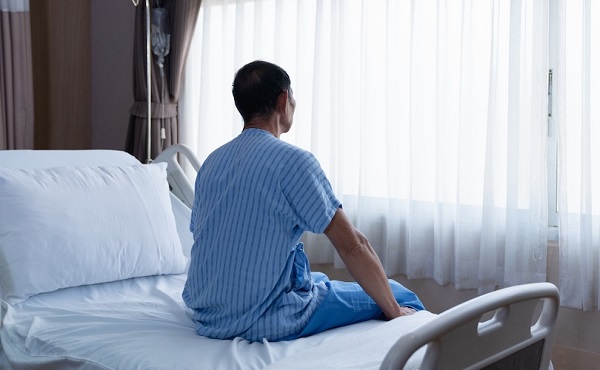
 Great Reset2 days ago
Great Reset2 days agoCanadian government forcing doctors to promote euthanasia to patients: report
-
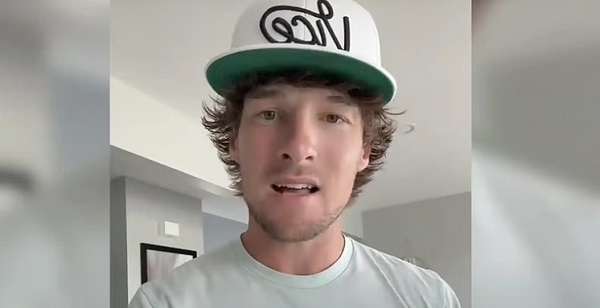
 Alberta2 days ago
Alberta2 days agoSylvan Lake football coach fired for opposing transgender ideology elected to town council
-
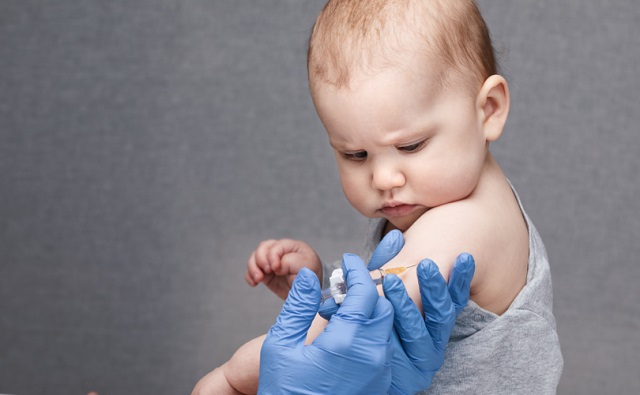
 Health2 days ago
Health2 days agoNEW STUDY: Infant Vaccine “Intensity” Strongly Predicts Autism Rates Worldwide
-

 Carbon Tax2 days ago
Carbon Tax2 days agoCarney fails to undo Trudeau’s devastating energy policies
-

 Business1 day ago
Business1 day agoNearly One-Quarter of Consumer-Goods Firms Preparing to Exit Canada, Industry CEO Warns Parliament
-

 Daily Caller23 hours ago
Daily Caller23 hours agoDemocrats Explicitly Tell Spy Agencies, Military To Disobey Trump





